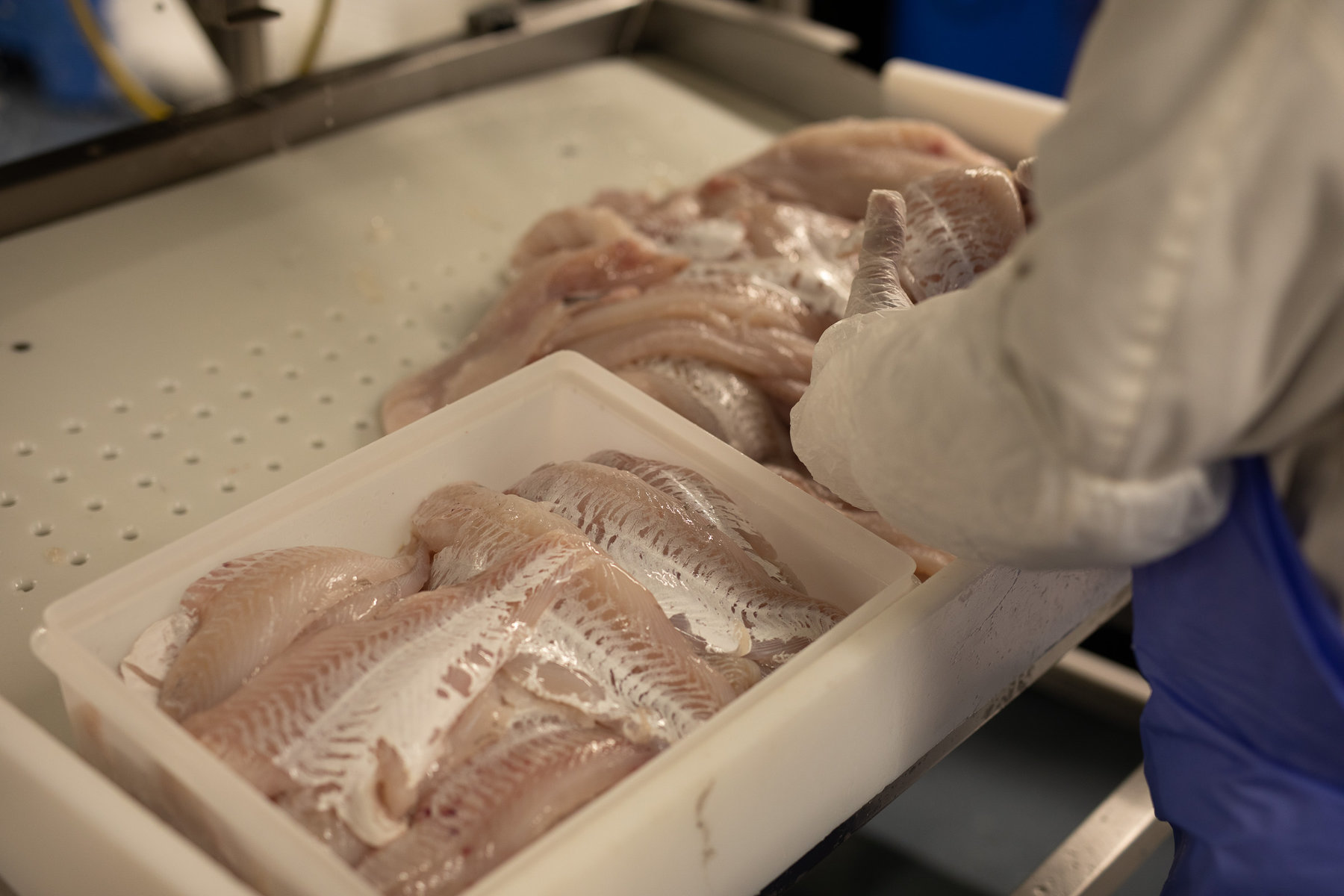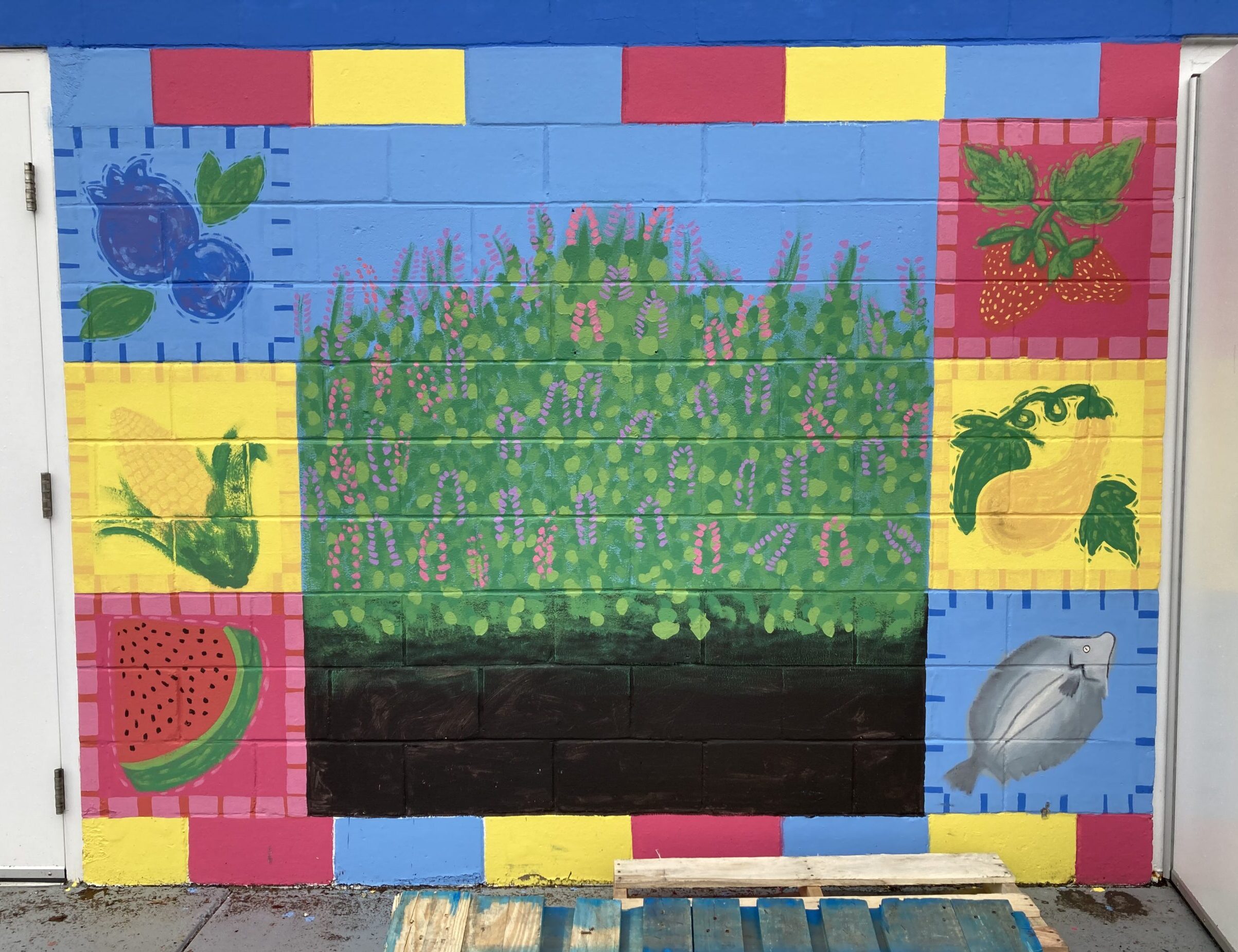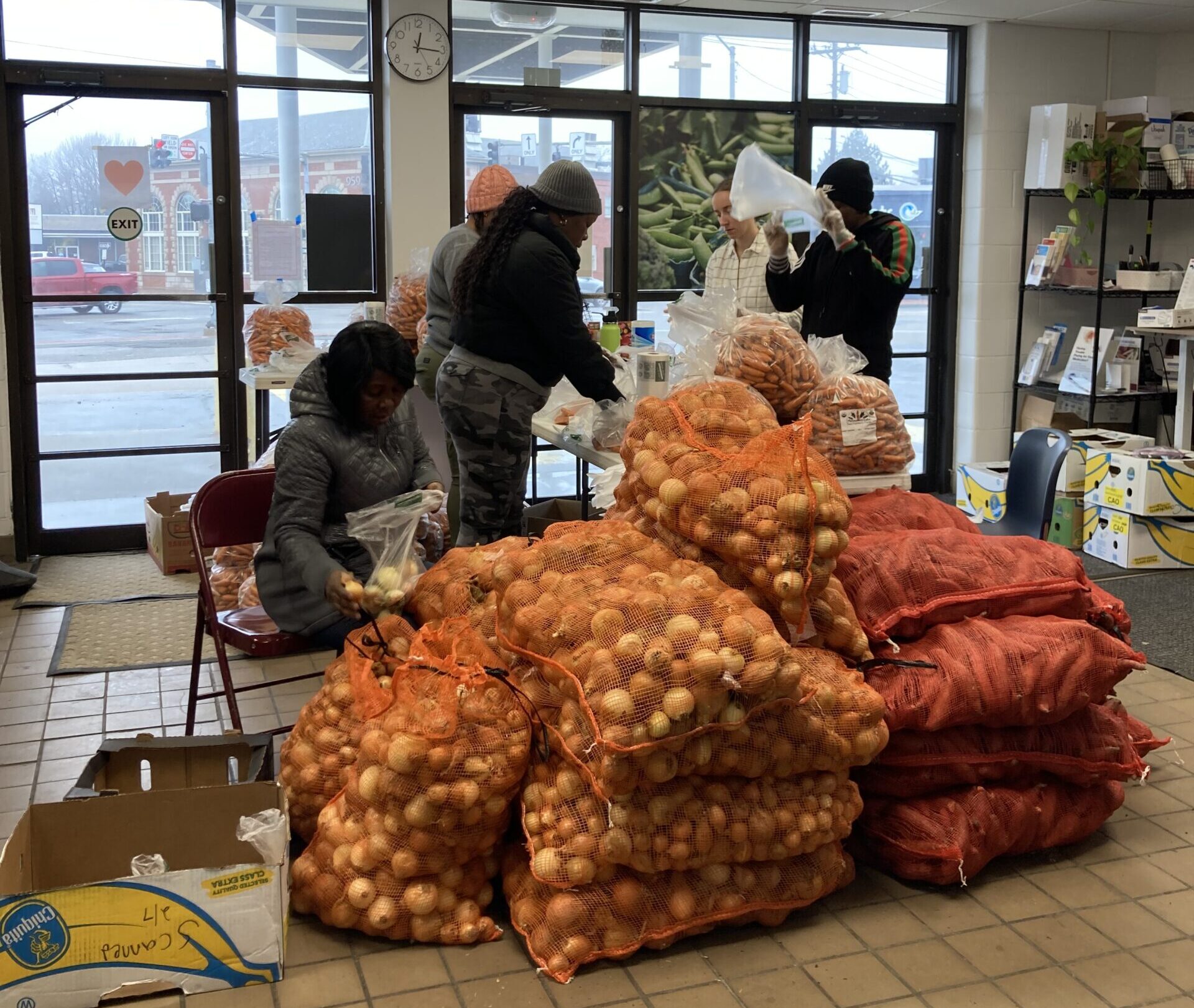In the four years since its launch, FFM has overseen the distribution of over 850,000 pounds of fish to 280 schools, food banks and community groups, including school districts as far north as Fort Kent on the Canadian border, where fresh fish is near-impossible to source. The program has been such an important source of healthy protein to the schools in Fort Kent that Melanie Lagasse, Unified Valley food service director, will make the five-and-a-half-hour drive to Portland to pick up the FFM fish herself. “The only thing it costs me is my time and fuel,” Lagasse says. And fishermen and fishworkers, including King and his crew on the Brittany Lynn, continue to benefit from the program, which King says buys species like pollock, hake and grey sole — less popular groundfish species — for a more than decent price.
Quite literally, fishermen are feeding Mainers with the help of MCFA. “We broke a million meals after two and a half years,” reports Olcott. Today, that number has risen to 1.25 million meals donated to the food insecure.
Crushed by negative news?
Sign up for the Reasons to be Cheerful newsletter.
Though the goal was to help Maine’s fishermen, in doing so, the folks at MCFA entered into a broader discussion about fish and food insecurity. “Seafood, for so long, has just been outside of local food conversations,” Martens explains. Paraphrasing the sustainable seafood expert Barton Seaver, Martens elaborates on the widely held belief that “food comes from farmers and seafood comes from the ocean.” This idea “really reflects the mindset of most people when you’re thinking about our food system and what you’re eating,” Martens says. “One of our goals is to put the fishermen back into the food system.”


Part of that effort is confronting ideas we hold about eating fish, one of which is scarcity. “We tell the story about the decline of the groundfish fishery in Maine, and in New England, and a lot of that is attached to cod,” Martens says. While cod was indeed overfished in the 1990s and isn’t expected to recover to sustainable levels until 2030, there is growing evidence in the Gulf that other groundfish populations, like monkfish, pollock and grey sole, are stable. “One of the neat things about Maine fisheries that we can say with good conscience as an organization is that if it’s from Maine, it’s sustainable,” Olcott says. The domestic seafood industry is already highly regulated, but in the Gulf of Maine, there are additional factors that add to sustainability, particularly in the groundfish fleet: Businesses are independently owned and operated, which means a lot of fishermen end up in inadvertent roles as stewards of the fishery. They’re cognizant of the value of harvesting in sustainable ways, and many participate in electric monitoring and gear modification programs.
Amid this ongoing sustainability conversation, one of the bigger challenges FFM faces has also proven to be one of the program’s more replicable features: the purchase and supply of underutilized species. Identifying and developing markets for lesser-known types of fish is not only sustainable but positions fisheries everywhere to weather some of the more severe economic consequences of climate change. But selling people on trying unfamiliar fish comes with some hurdles. Most people are acquainted with cod, less so with pollock, hake and grey sole, even though these fish can all be substituted for most recipes calling for a flavorful, flaky fish.


Expanding what can be considered culinary, which FFM tries to do with various types of outreach including developing and distributing their own value-added monkfish stew to regional grocers, is a type of messaging that could be adapted by other fisheries nationwide. “We are in a really interesting position where we can slowly start to rebuild those markets with fishermen landing more consistently,” says Olcott. And while perhaps it is a little harder to make people more adventurous about what species they’re eating, how they’re eating it, FFM is finding, is very consistent.
Though there is less of a market based on species, there is one for whole, intact fish. With their bones and skin, along with their meat, whole fish provide more nutrition and more flavor when cooked, and they can be used in a variety of preparations, as opposed to fish that have been processed down into filets and other cuts. At the MaineHealth Food Pantry at Maine Medical Center, a shopping-model food bank where visitors can browse shelves and coolers for food, groundfish from FFM has become a sustaining protein. “Because we’re a hospital-based food pantry, we have certain standards on the healthy food that we’re offering,” Rachel Freedman, the food pantry’s program manager, tells me. “And our focus along those lines is really on culturally important food.” Species of fish that turn flaky and white when cooked swim the oceans worldwide, which makes the groundfish donated by FFM especially important at the Food Pantry: They can be used to replicate just about any dish that calls for white fish, and they are also halal.


Located in Portland’s old Greyhound bus station, the Pantry distributes between 17,000 and 19,000 pounds of food a week to an average of 550 community members and their families. Many of the Pantry’s customers are new to Maine, and the United States more generally, with over 80 percent of visitors speaking French, Portuguese or Spanish as their primary language. With such a diverse clientele, the Pantry has “cultural brokers,” community members that help visitors navigate the space and the products that are available.
Though many of the Pantry’s products are novel to its community members, whole fish spans cultures and languages, and it has become one the Pantry’s most in demand items. “We have folks that are shopping who are from Southeast Asia, that’s what they want. We have folks who are shopping who are from Central Africa, that’s what they want,” says Freedman. “Across cultures, the whole fish is definitely the hottest ticket item.”
At the Pantry, visitors can find a variety of pamphlets and cookbooks by immigrant women living in Maine that offer local substitutions for recipes of their home countries where fish like tilapia is more common. “Some people come in and they’re like, ‘I just got here last week,’” Freedman says. “And some people are a little bit more established. But everyone’s kind of working on, ‘I’m used to this thing. What do we have here in Maine that I can still use in cooking that feels familiar and comfortable and important?’”

